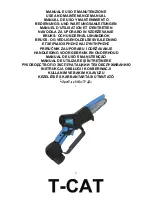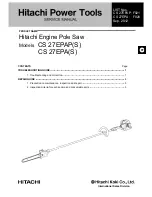
18
7. When cutting long pieces of timber, support the ends of the timber with the side
support bars (21), a roller stand or a work surface (bench) that is level with the
mitre table (24).
8. Use the material clamp (8) to secure the workpiece.
9. Before turning the Mitre Saw on, perform a dry (test) run of the cutting operation
to check that there are no problems and everything is correctly adjusted.
CAUTION!
Before performing a cut, ensure the blade (13) is at full speed.
Failure to do this will cause the blade (13) to become blunt and can cause the
blade to lock-up.
10. Turn on the Mitre Saw, wait for the blade (13) to reach full speed and then lower
the cutting head (3) so the blade (13) starts cutting the workpiece.
11. Release the on/off switch (7) when the cut is complete and allow the blade (13) to
stop rotating before raising the cutting head (3).
Compound Mitre Cut
A compound mitre cut involves using a mitre angle
and bevel angle at the same time (Fig. 32). It is used
to make picture frames, cut mouldings, make boxes
with sloping sides and roof framing. Always test cut on
a piece of scrap wood before cutting into the final
workpiece.
With compound cutting, the slide action is also
required when cutting wide pieces of wood.
1. Ensure the cutting head (3) is raised and the head locking pin (4) is released.
2. Loosen the mitre lock knob (26) by turning in an anti-clockwise direction.
3. Push down on the mitre adjustment lever (27) and rotate the mitre table (24) to the
desired angle. Use the mitre angle indicator (28) as a guide.
4. Retighten the mitre lock knob (26) once the Mitre Saw is set at the desired angle.
WARNING!
Ensure the mitre lock knob (26) is tight before making a cut.
Failure to do so may result in the rotating mitre table (24) moving during
operation and cause serious personal injury.
OPERATION (cont.)
Fig. 32
!!












































